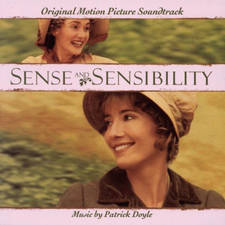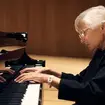Was Mozart’s sister actually the most talented musician in the family?
7 October 2024, 18:41 | Updated: 8 October 2024, 11:21

Overshadowed during her life and overlooked after, evidence continues to emerge about Nannerl Mozart’s immense talents and musical gifts.
Listen to this article
In the 18th century, Mozart toured Europe, wowing audiences across the continent and impressing critics.
But we’re not talking about Wolfgang Amadeus... The famous composer’s older sister Maria Anna Mozart (nicknamed ‘Nannerl’) toured with her brother and father and found her own fame. Now scholars and historians believe they might be uncovering the true extent of her talents and influence.
Nannerl was born in Salzburg in 1751, and like her brother was a child prodigy. From her early years, she achievied top billing in concerts performing on the harpsichord and fortepiano. At the age of 13, with her and her brother billed as “wunderkinder” in a tour of London. She was even billed first, and reviews at the time praised her performances.
In a letter, her father Leopold Mozart wrote: “My little girl plays the most difficult works which we have… with incredible precision and so excellently. What it all amounts to is this, that my little girl, although she is only 12 years old, is one of the most skilful players in Europe.”

Read more: 10 women who changed the classical music world forever
Her dad was far from the only one impressed by her talents.
In 1762, the two little Mozarts played for a collection of aristocrats in Munich. One of those present, Count Karl von Zinzendorf recorded his thoughts in his diary: “The little child from Salzburg and his sister played the harpsichord. The poor little fellow plays marvellously. He is a child of spirit, lively, charming. His sister’s playing is masterly, and he applauded her.”
Nannerl also composed – she sent one of her compositions to her brother in 1770 and he responded in a letter with the words: “My dear sister! I am in awe that you can compose so well, in a word, the song you wrote is beautiful.” Sadly, none of her compositions and manuscripts have survived.
When she turned 18, in accordance with the conventions of the times, Nannerl no longer performed or publically displayed her musical talents. It’s believed she still composed in private, as well as played piano and taught music.

‘The Other Mozart’
Playwright Sylvia Milo is of the view that she was actually the more talented sibling.
Milo’s play The Other Mozart, subtitled The forgotten genius of Mozart’s sister, had rave reviews when it opened in 2015. Speaking to The Huffington Post, Milo said that she hadn’t even heard of Nannerl until she visited Mozart’s house in Vienna and saw a painting of the two siblings together.
“My attention was drawn to the fact that there was a woman sitting next to Mozart looking like his equal,” Milo said. “Yet the things she composed did not survive. It just seemed to me like a story that needed to be told. If no one else was going to do that, I decided I would do it myself.”
Milo’s has a theory that her influence was far deeper than thought. “[Nannerl] copied down some of Wolfgang’s compositions when he was too young to write them down. So, it’s possible some of Wolfgang’s compositions are hers. We also know when he was in London working on his first symphony [above], she wrote it all down and orchestrated it for him. It’s unclear how big their collaboration was, but she was an extremely talented musician.”

Did Mozart put his name to his sister’s music?
Australian professor, Martin Jarvis, suggested that three out of five of Mozart’s violin concertos could have actually been composed by Nannerl.
Professor Jarvis has been forensically studying original Mozart manuscripts since 2007 while working as professor and lecturer of music at Charles Darwin University, Australia.
Read more: Mozart claimed credit for his sister’s compositions, says former conductor turned professor
The once professor told ABC News, “Of the five violin concertos, three of them were composed by a person called Wolfgang Amadeus Mozart, and two of them – in a different handwriting – were composed apparently by Amadeus Wolfgang Mozart.
“We know that [Nannerl] composed because even in some of [his] letters, Mozart compliments her on her music”, and, “We know that various composers, including Bach, copied other people’s music and then put their name on it.”
Professor Jarvis thinks that one possibility is that Nannerl had chosen to have her work published at the time under her brother’s name due to her gender. “She may well have pushed herself out of the picture because of the value of the manuscripts if they were thought to be by her brother,” he says.

Nannerl married and had three children. The eldest she named Leopold after her father. She died in 1829
History has seen the talents of many women composers and musicians cut short or restricted. Nannerl Mozart was subject to the same family and societal pressure which impacted Clara Schumann, Fanny Mendelssohn and many more.
We will never know the true extent of her compositions, talent or influence – but research does point that beneath the mystery may be one of music history’s all-time great geniuses.
























